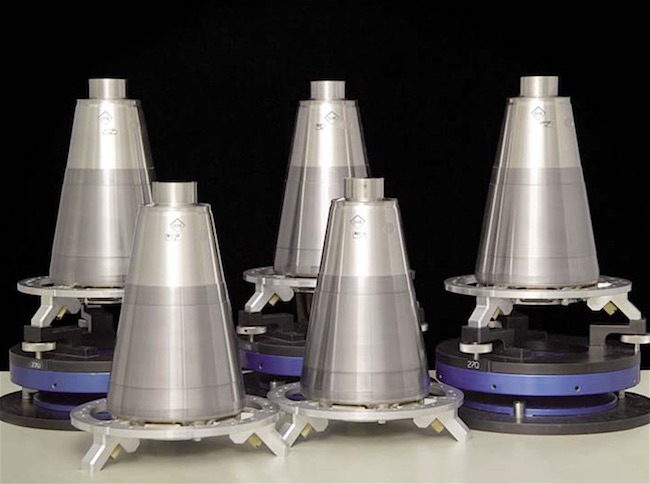Warhead “Super-Fuze” Increases Targeting Capability Of US SSBN Force

The MC7400 AF&F unit on the new W76-1/Mk4A warhead contains a super-fuze that dramatically increases its hard target kill capability. Image: Sandia National Laboratories
By Hans M. Kristensen
Under the cover of an otherwise legitimate life-extension of the W76 warhead, the Navy has quietly added a new super-fuze to the warhead that dramatically increases the ability of the Navy to destroy hard targets in Russia and other adversaries.
In a new article in the Bulletin of the Atomic Scientists Matthew McKinzie from NRDC, Theodore A. Postol from MIT, and I describe the impact of the super-fuze on the targeting capability of the US SSBN force and how it might effect strategic stability.
The new super-fuze dramatically increases the capability of the W76 warhead to destroy hard targets, such as Russian ICBM silos.
We estimate that the super-fuze capability is now operational on all nuclear warheads deployed on the Navy’s Ohio-class ballistic missile submarines. The new fuze has also been installed on warheads on British SSBN.
“As a consequence, the US submarine force today is much more capable than it was previously against hardened targets such as Russian ICBM silos. A decade ago, only about 20 percent of US submarine warheads had hard-target kill capability; today they all do.”
The new article builds on previous work by Ted Postol and myself but with new analysis explaining how the super-fuze works.
In the article we conclude that the SSBN force, rather than simply being a stable retaliatory capability, with the new super-fuze increasingly will be seen as a front-line, first-strike weapon that is likely to further fuel trigger-happy, worst-case planning in other nuclear-armed states.
Read full article here: Hans M. Kristensen, Matthew McKinzie, Theodore A. Postol, “How US nuclear force modernization is undermining strategic stability: The burst-height compensating super-fuze,” Bulletin of the Atomic Scientists, March 1, 2017.
Previous writings about the super-fuze:
- Theodore A. Postol, “How the Obama Administration Learned to Stop Worrying and Love the Bomb,” The Nation, December 10, 2014.
- Hans M. Kristensen, “British Submarines to Receive Upgraded US Nuclear Warhead,” FAS Strategic Security Blog, April 1, 2011.
- Hans M. Kristensen, “Administration Increases Submarine Nuclear Warhead Production Plan,” FAS Strategic Security Blog, August 30, 2007.
- Hans M. Kristensen, “Small Fuze – Big Effect,” FAS Strategic Security Blog, March 14, 2017.
This publication was made possible by a grant from Carnegie Corporation of New York and Ploughshares Fund. The statements made and views expressed are solely the responsibility of the author.
While it is reasonable for governments to keep the most sensitive aspects of nuclear policies secret, the rights of their citizens to have access to general knowledge about these issues is equally valid so they may know about the consequences to themselves and their country.
Nearly one year after the Pentagon certified the Sentinel intercontinental ballistic missile program to continue after it incurred critical cost and schedule overruns, the new nuclear missile could once again be in trouble.
“The era of reductions in the number of nuclear weapons in the world, which had lasted since the end of the cold war, is coming to an end”
Without information, without factual information, you can’t act. You can’t relate to the world you live in. And so it’s super important for us to be able to monitor what’s happening around the world, analyze the material, and translate it into something that different audiences can understand.